Special Series: Art Gobblers Analysis — Formulator of A New NFT Model
Let’s deep dive to art gobblers mechanism and business model.

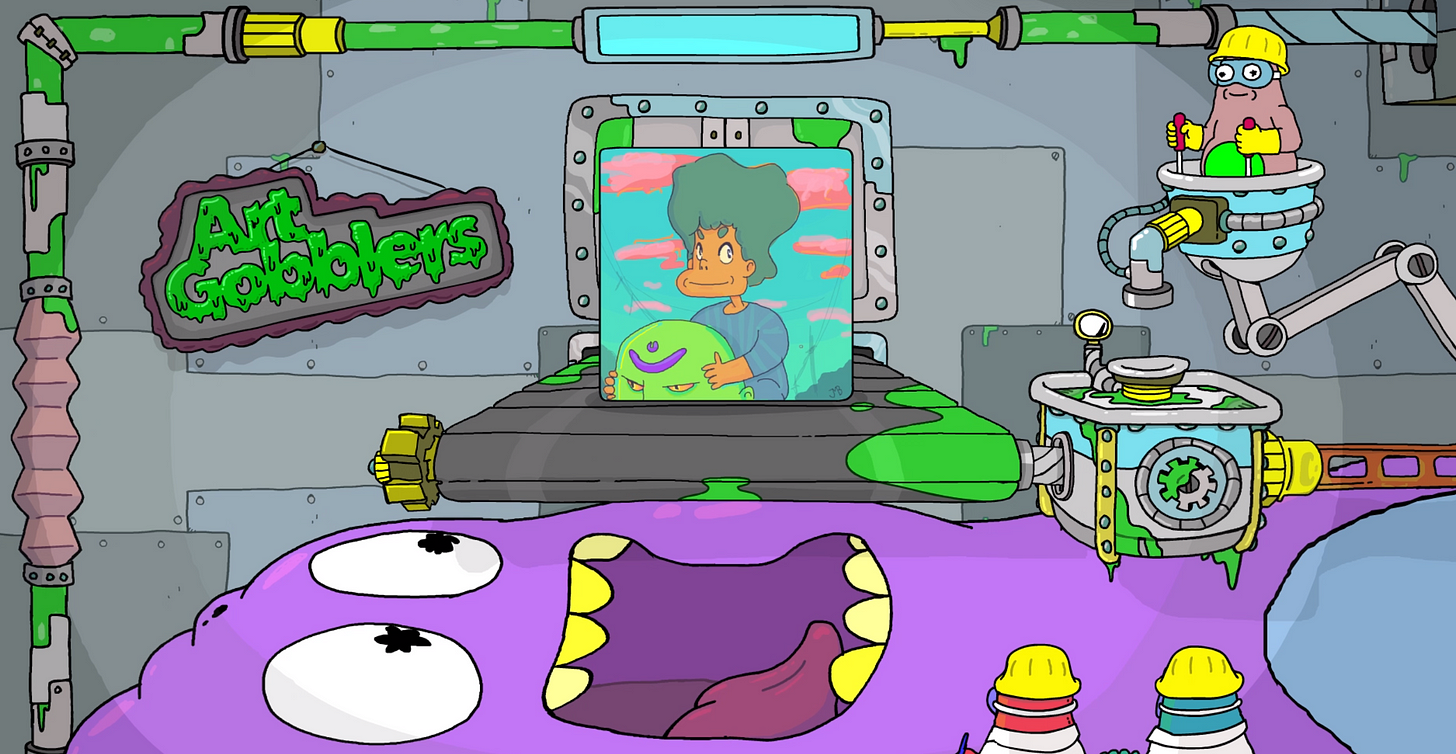
Table of Contents
Introduction
Fusing Creativity and Gameplay
Goo + VRGDA
Data Performance
Market Data
Holders Analysis
How It Works
Goo→Blank Pages→Drawn Pages→Gobblers
Legendary Gobblers
Merging Ownership
Variable Rate GDAs
Pricing Reference Formula and Curve Fitting
Quantity Reference Equation and Curve Fitting
The Ideal Time-Sales Curve
GOO: Gradual Ownership Optimization
Goo Supply Curve
Balancing Strategies:
Goo Production Rate
Introduction
Art Gobblers is an NFT project designed and distributed by Justin Roiland and Paradigm.
Justin Roiland is a voice actor, animator, producer, and director. He is best known for his voice acting in Rick and Morty, an animated sitcom. On the other hand, Paradigm is a leading crypto investor that has invested in stellar projects such as FTX, Uniswap, and Magic Eden.
The team employs multiple bold and innovative mechanisms in the design of Art Gobblers, including Variable Rate GDAs and Goo (Gradual Ownership Optimization), which are useful for solving the common challenges encountered by current NFT projects.
1.Fusing Creativity and Gameplay
The Art Gobblers website (https://artgobblers.com/draw) allows people to create artworks with drawing tools, and the work created is fused inside the belly of Gobblers, resulting in a unique collaborative NFT piece.
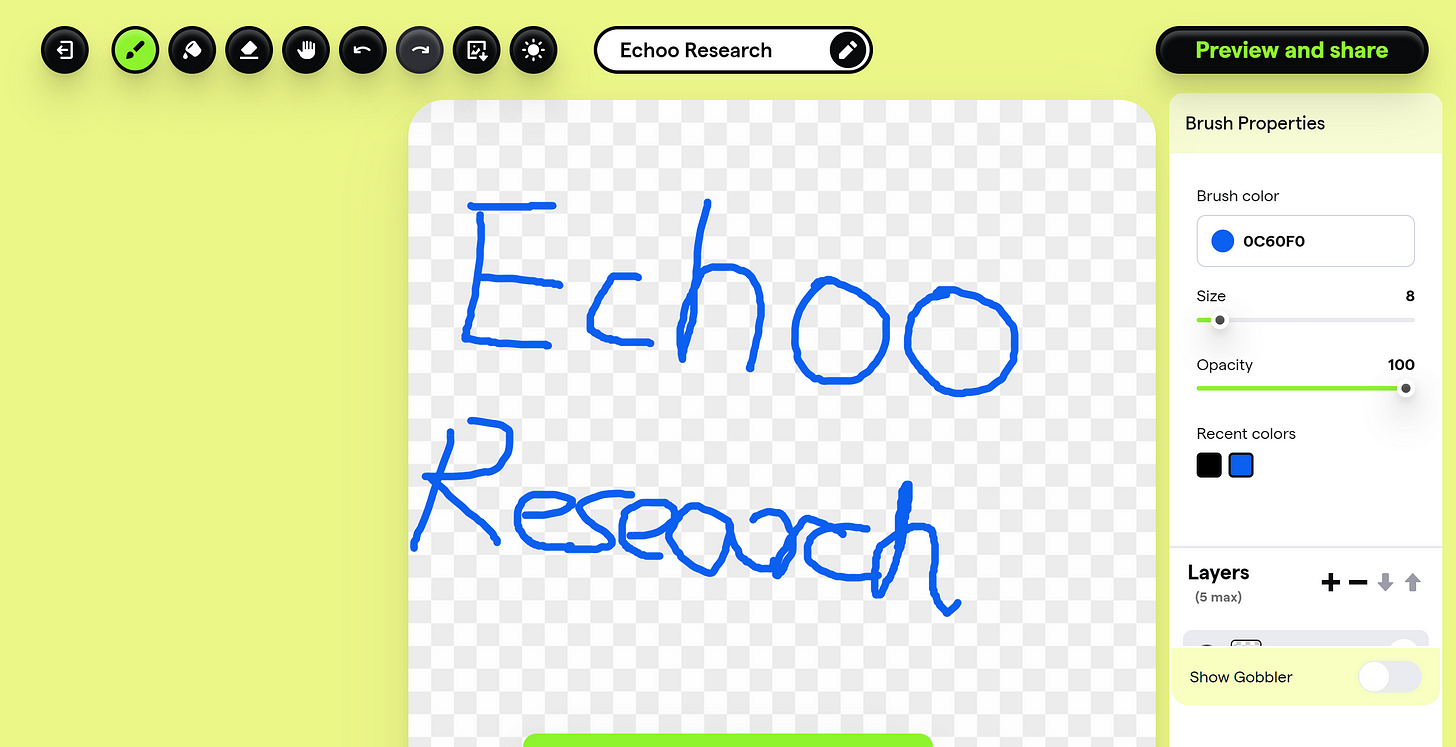
Tools
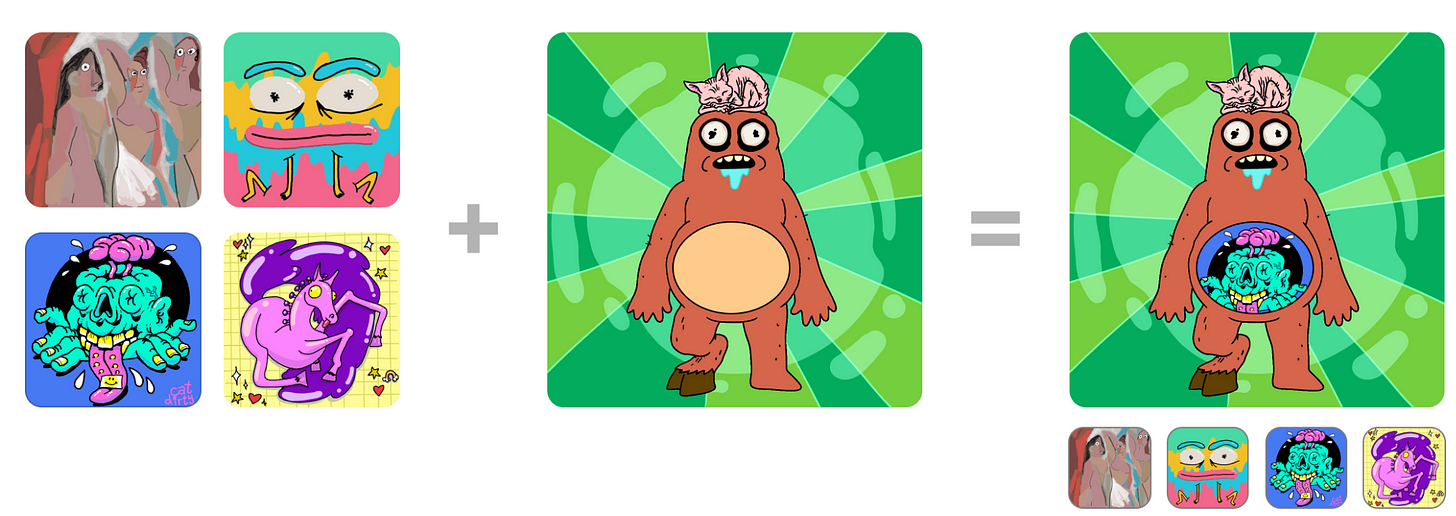
Generative mechanisms
2.Goo + VRGDA
The initial 2,000 Gobbler NFTs are issued as a free mint. Over the next 10 years, players will spend Goo to mint 8,000 more Gobblers using VRGDA.
Goo is an ERC 20 token produced by Gobblers NFT. The more Goo Gobblers have in their Goo tanks, the faster they squirt out more new Goo. Since the supply of Goo can start at zero and end up in the billions, the game can't be balanced by giving items fixed prices in Goo, which is why the team designed the VRGDA mechanism that automatically adjusts the price over time.
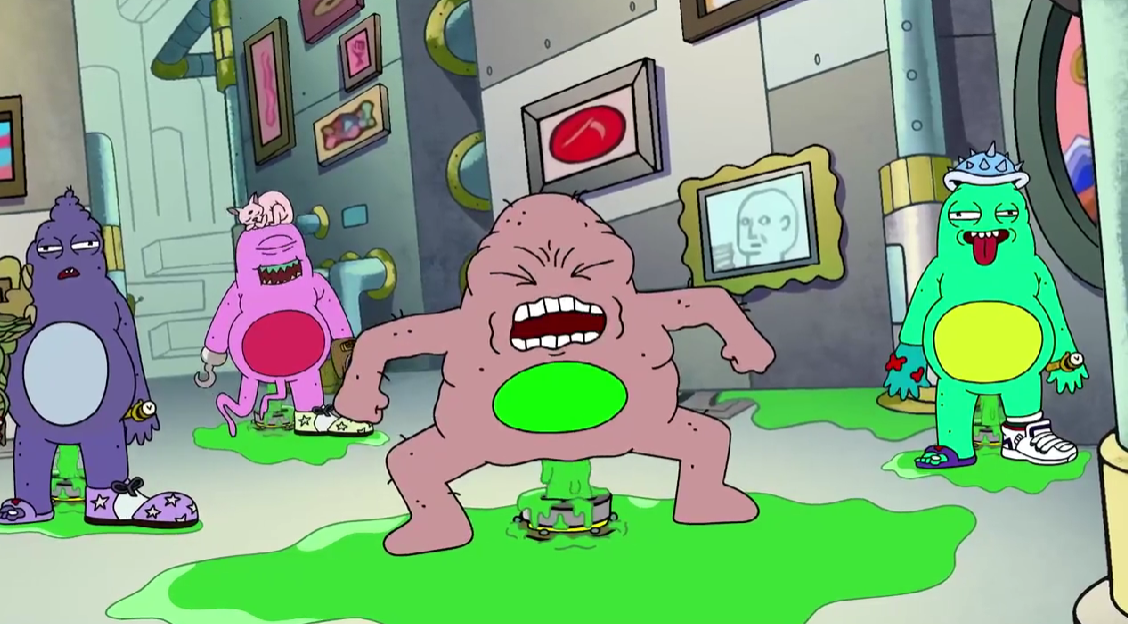
Gobblers squirting out Goo
By designing the Goo + VRGDA mechanism, the project has achieved the dynamic adjustment that "when players spend Goo to redeem Gobbler, the VRGDA price of others redeeming Gobbler will also be affected".
Data Performance
Art Gobblers opened free mint for mintlist on October 31st with an initial release of 2,000 NFTs, of which 300 slots were allocated to initial contributors of the project and the remaining 1,700 slots were allocated to collaborators, artists, collectors and other community members.
1.Market Data
As of November 4, 2022, Art Gobblers has a floor price of 8.6 ETH, a total trading volume of nearly 10K ETH, and 815 holders. Holders each hold 2.32 Art Gobblers NFTs on average.
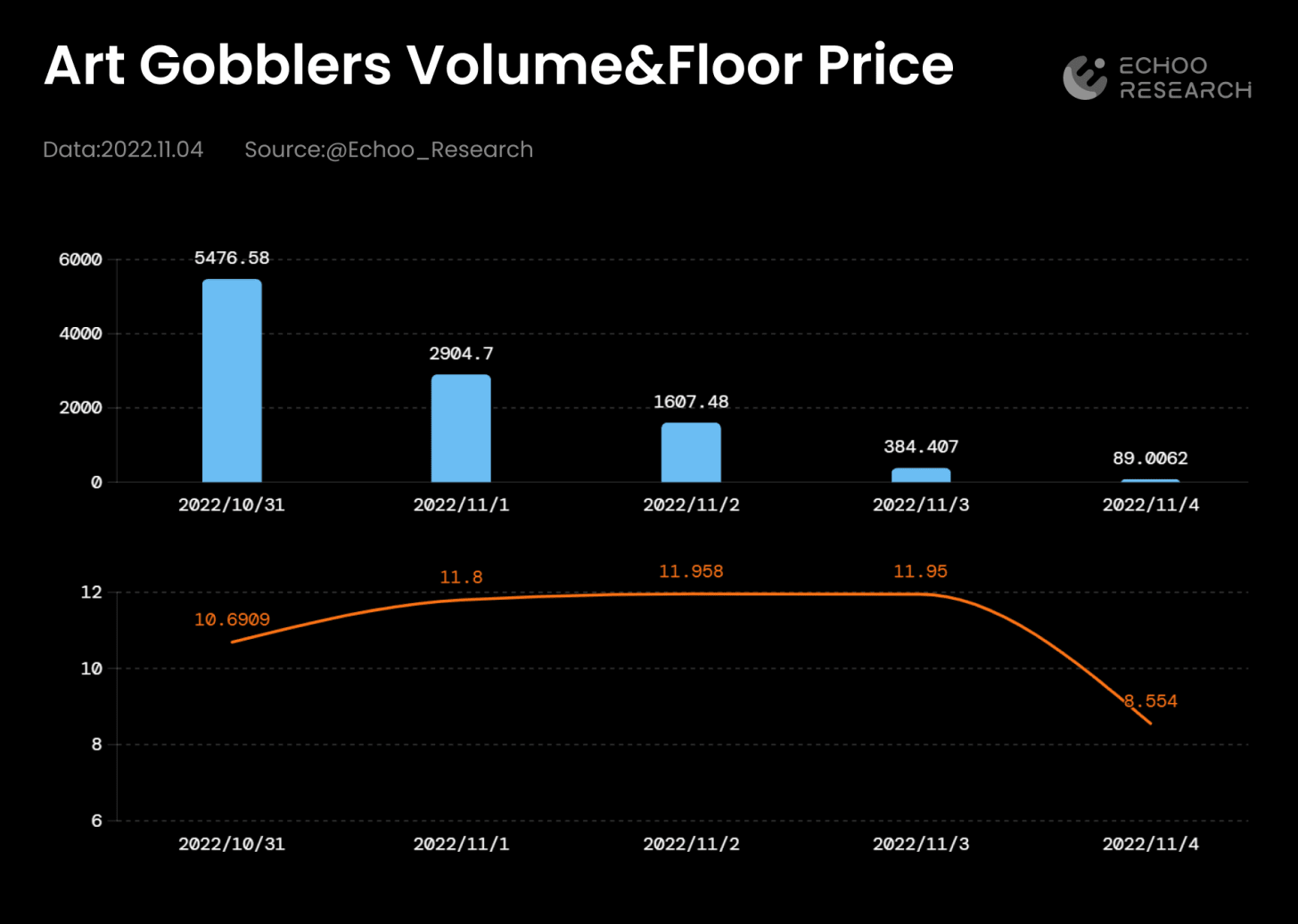
Art Gobblers volume and floor price
2.Holders Analysis
19.24% of the holders are blue chip NFT holders. This includes 39 Azuki holders, 37 Moonbirds holders, and 36 Doodles holders.
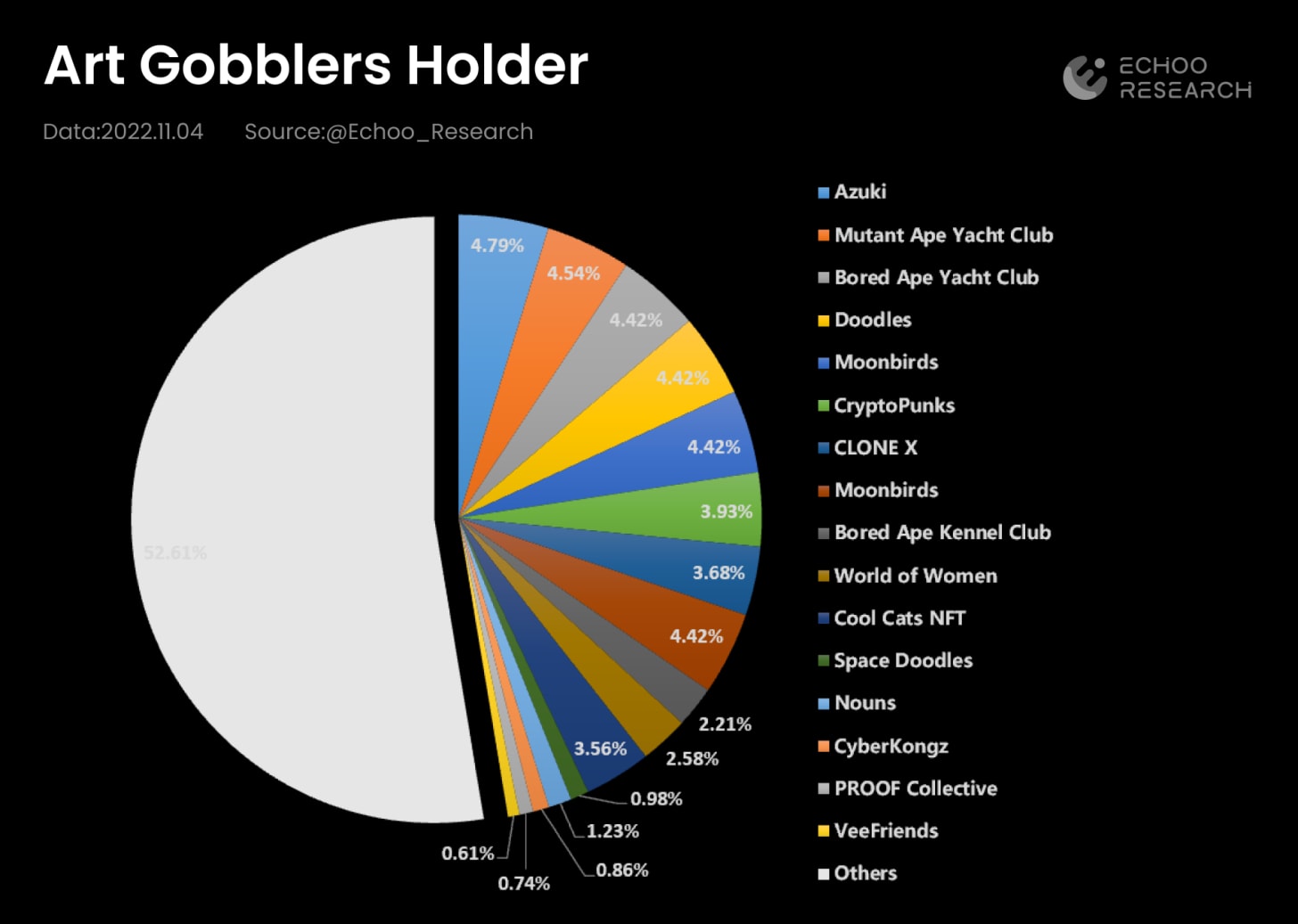
The holder composition of Art Gobblers
How It Works
1.Goo→Blank Pages→Drawn Pages→Gobblers
Art Gobblers holders produce Goo tokens, which are used to produce the blank pages needed to make art.
Players generate artwork (Drawn Pages) from blank pages, and synthesize artwork and Gobblers to display artistic Gobblers.
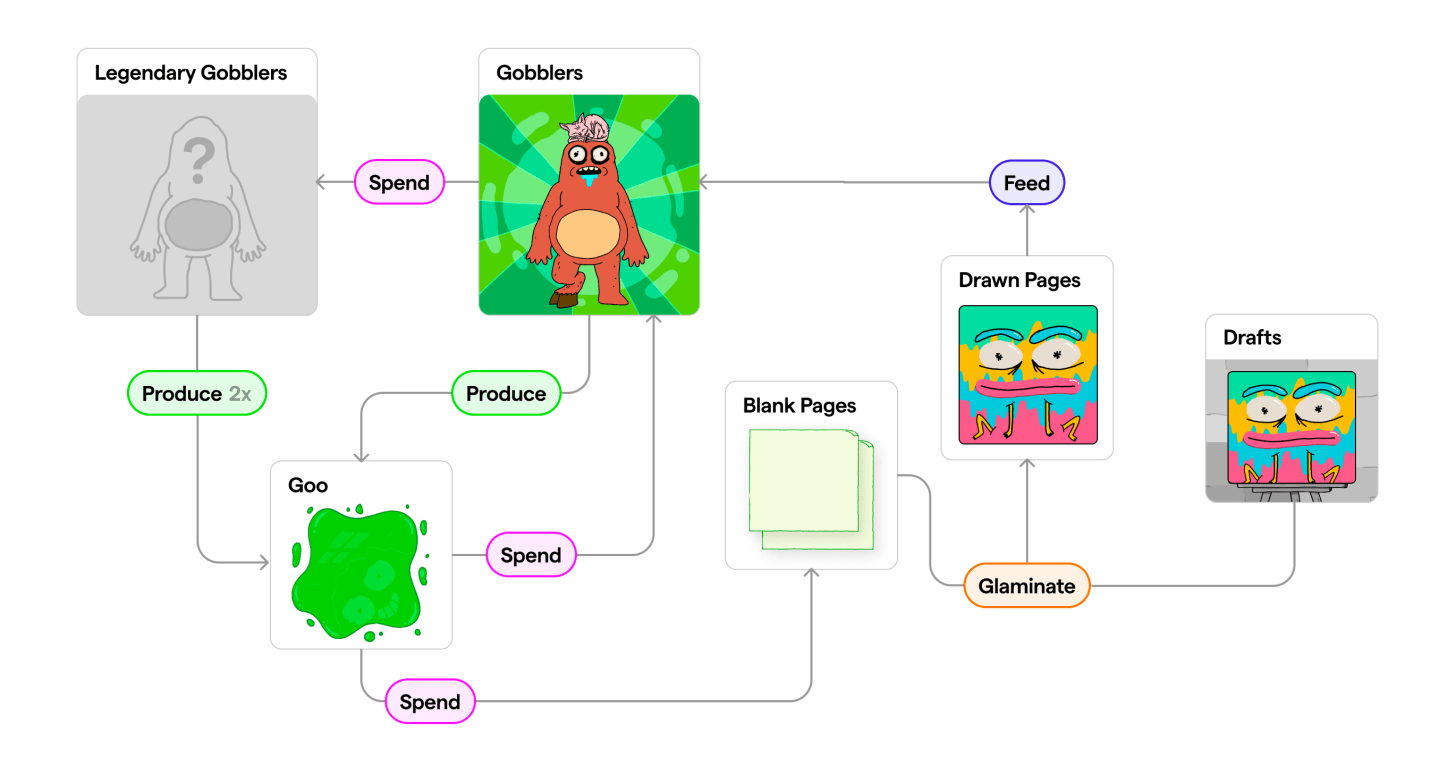
Synthesis steps
2.Legendary Gobblers
In addition to regular Gobblers, a new Legendary Gobbler appears each time an additional 10% of the total supply of Gobblers is issued. Legendary Gobblers produce Goo at twice the rate of the regular Gobblers.
The first Legendary Gobbler will start at a price of 69 Gobblers, and will become cheaper using a standard Dutch Auction mechanism until it is purchased. Each successive Legendary Gobbler will start at a price in ordinary Gobblers equal to twice what the last Legendary Gobbler sold for.
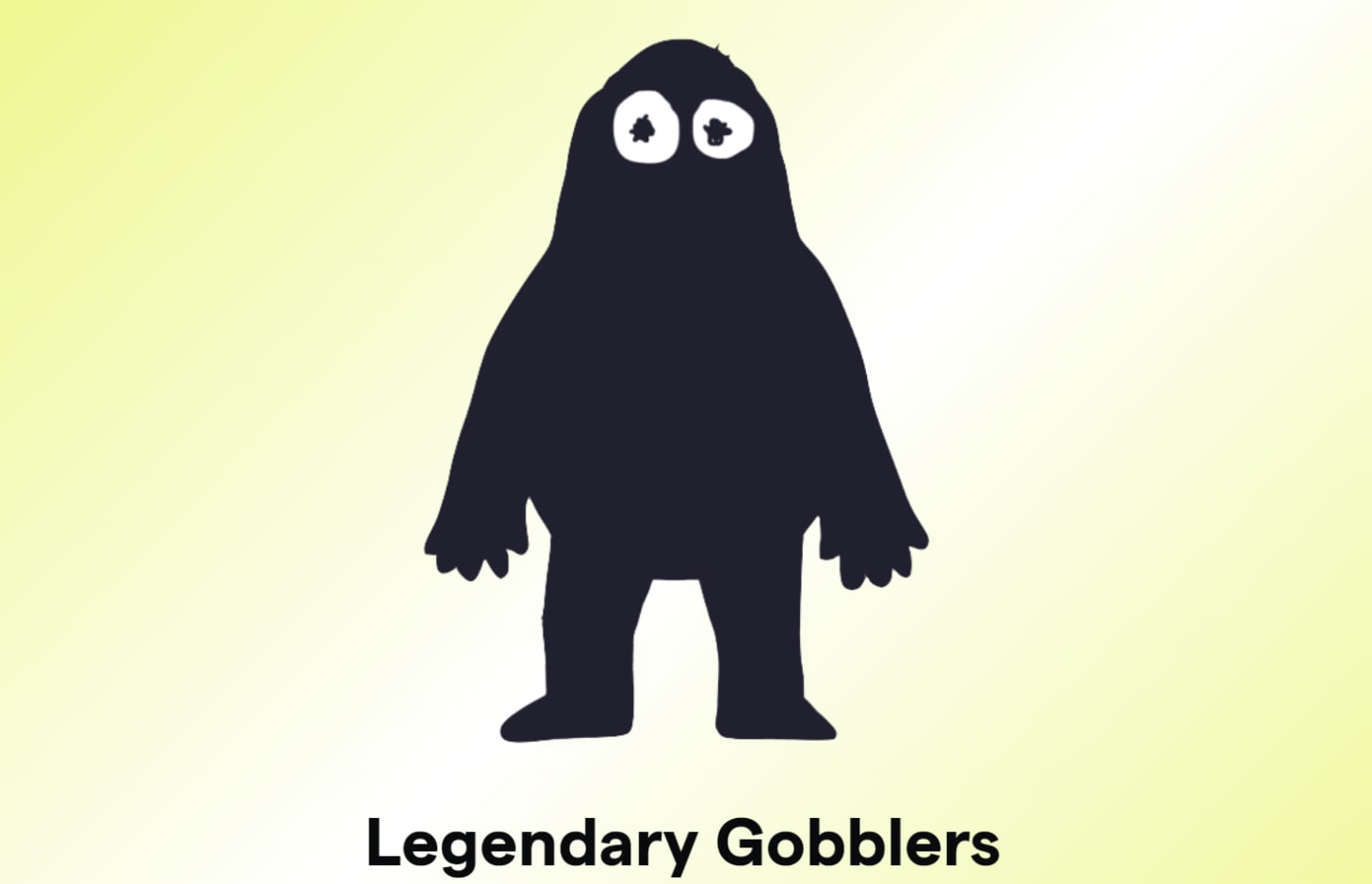
Legendary Gobblers
3.Merging Ownership
When a creator combines an artwork with Art Gobbler, ownership of that artwork page is transferred from on-chain to the Art Gobblers contract, which completes the mapping of the artwork with the Gobbler. If the creator transfers the Gobbler, both its contents and the artwork will transfer with it.
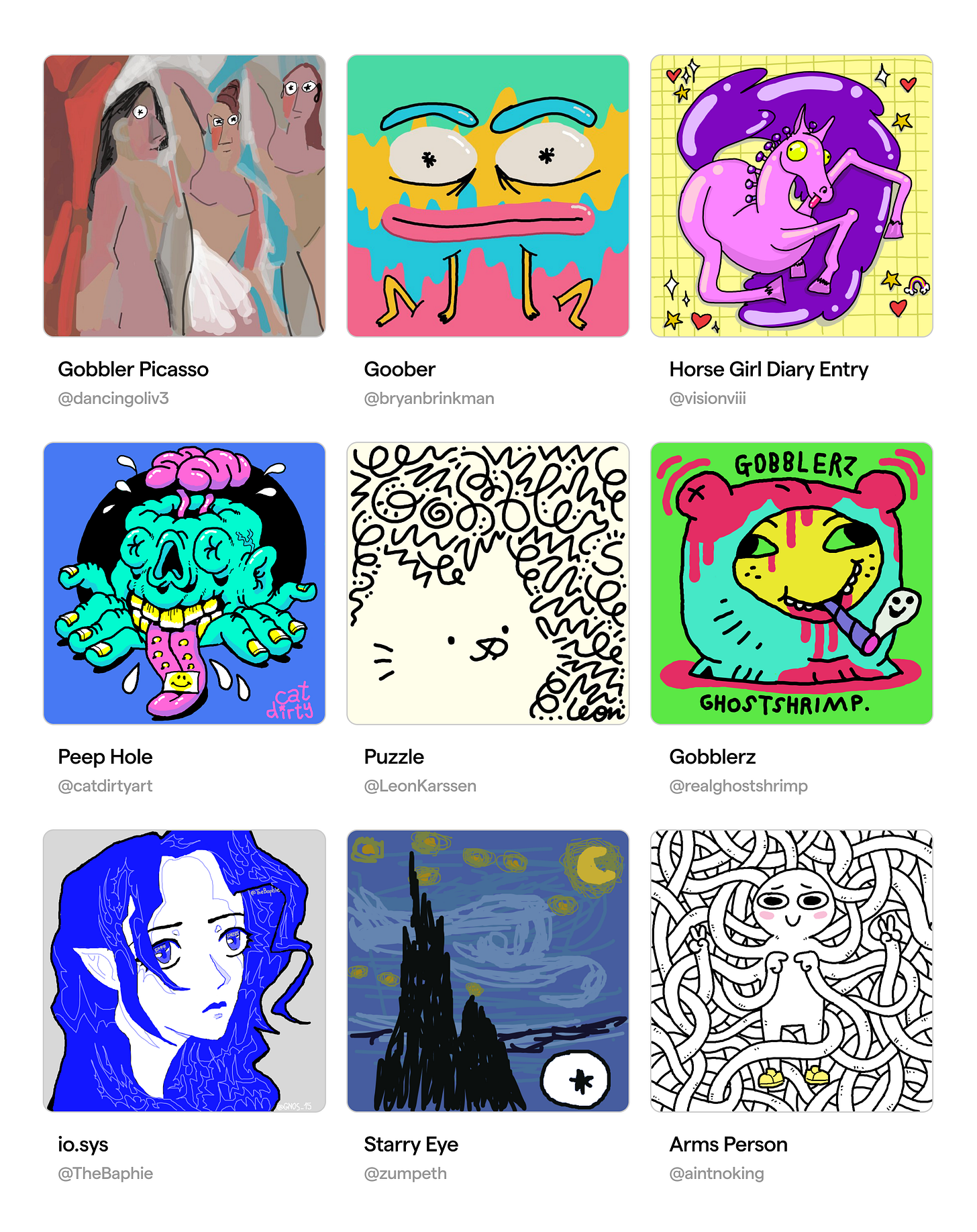
Examples of Artwork (Drawn Pages)
Variable Rate GDAs (VRGDAs)
In order to achieve the goal of "offering NFT quickly at first, then more slowly over time, but never stopping", the team designed VRGDAs.
The novelty of this token issuance mechanism is that the price is dynamically adjusted according to the number of sales and purchases, allowing NFT to be sold at a predetermined price.
In simple terms: on day 5, 50 NFTs are expected to be sold, but the market is particularly hot and 70 NFTs are sold, at which point the price will be raised by a function calculation to make it more difficult to buy NFTs. Similarly, at a specified time, when the number of sales is less than the expected number, the price will be lowered to stimulate buying activity.
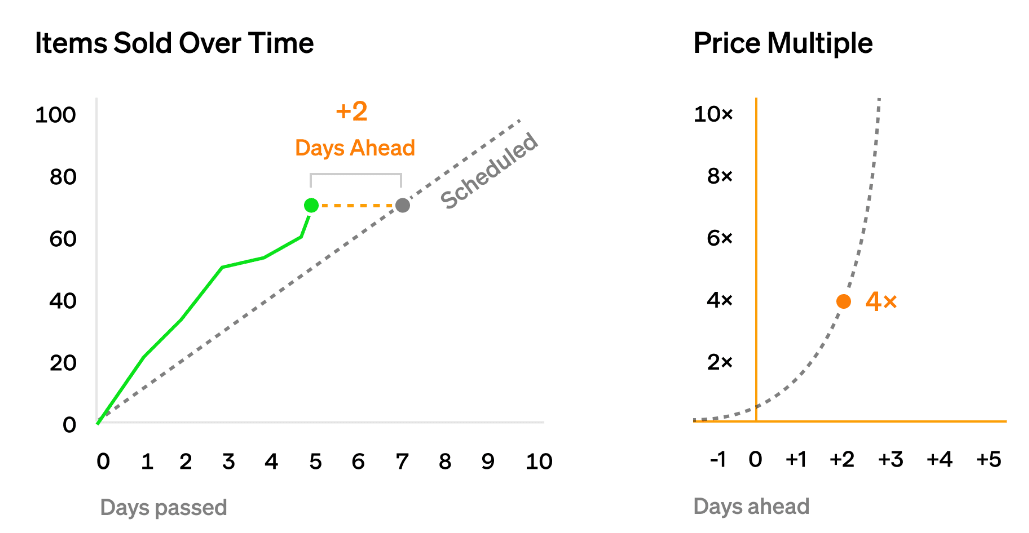
1.Pricing Reference Formula and Curve Fitting

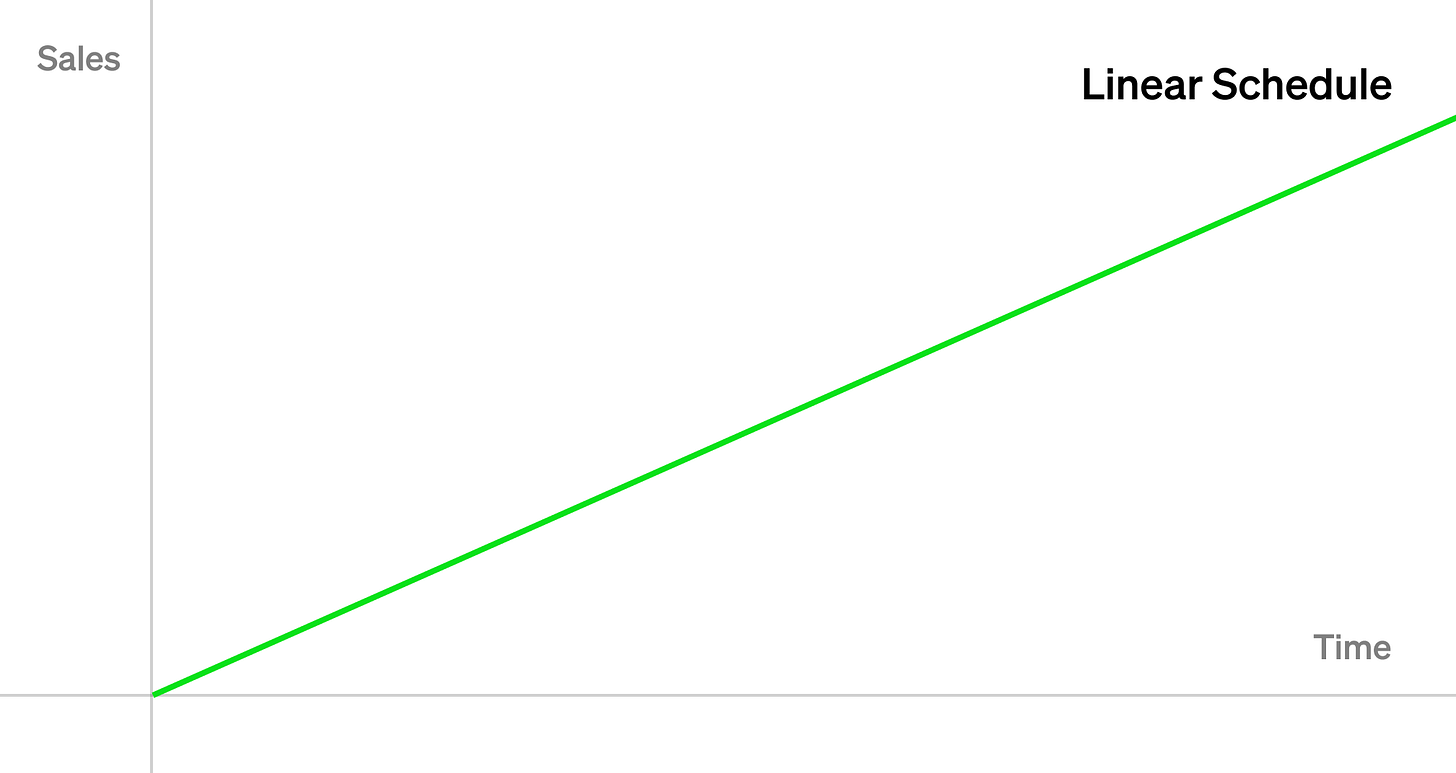
2.Quantity Reference Equation and Curve Fitting

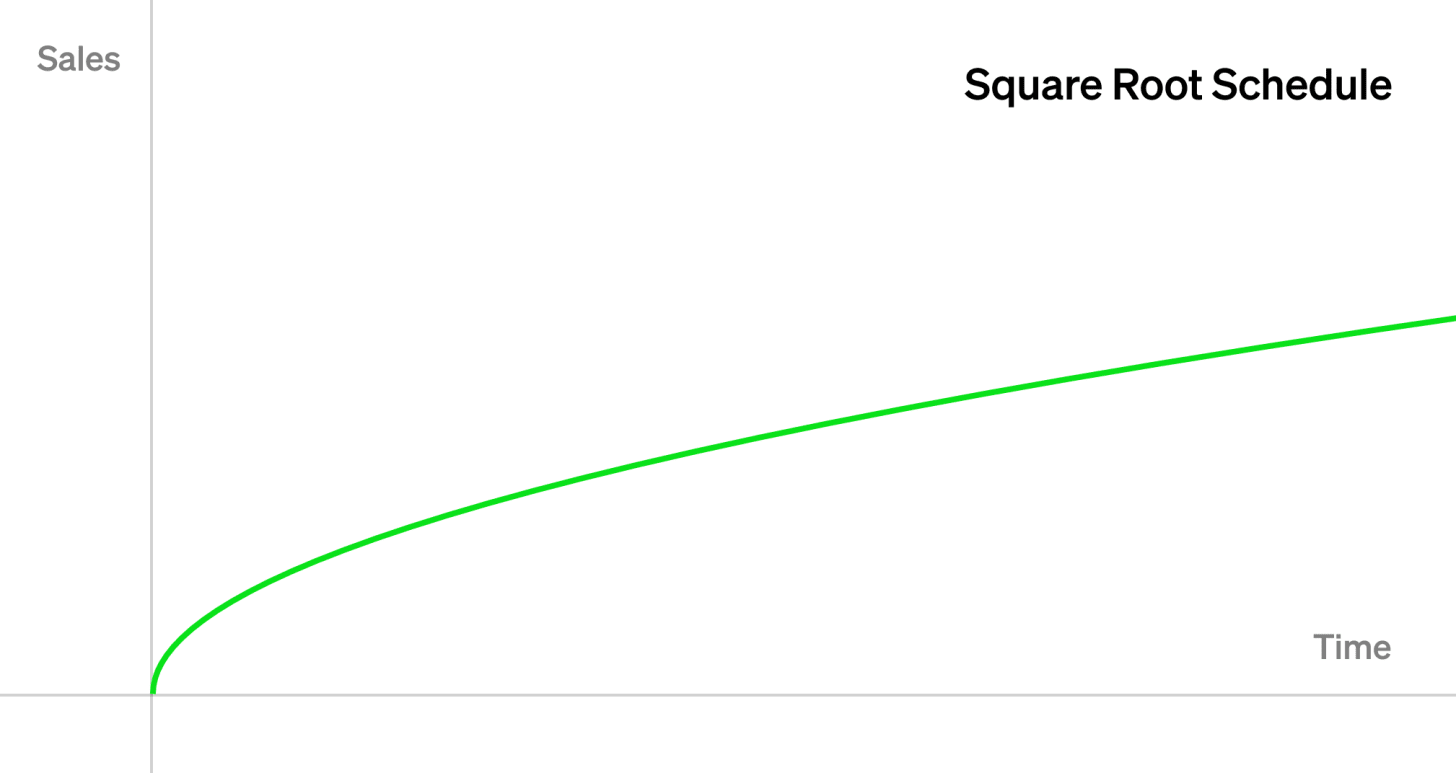
3.The Ideal Time-Sales Curve
The release schedule was used in conjunction with the VRGDA formula to obtain a more desirable time release curve, and to achieve the original motive: "release NFT quickly at first, then more slowly over time, but never stop".
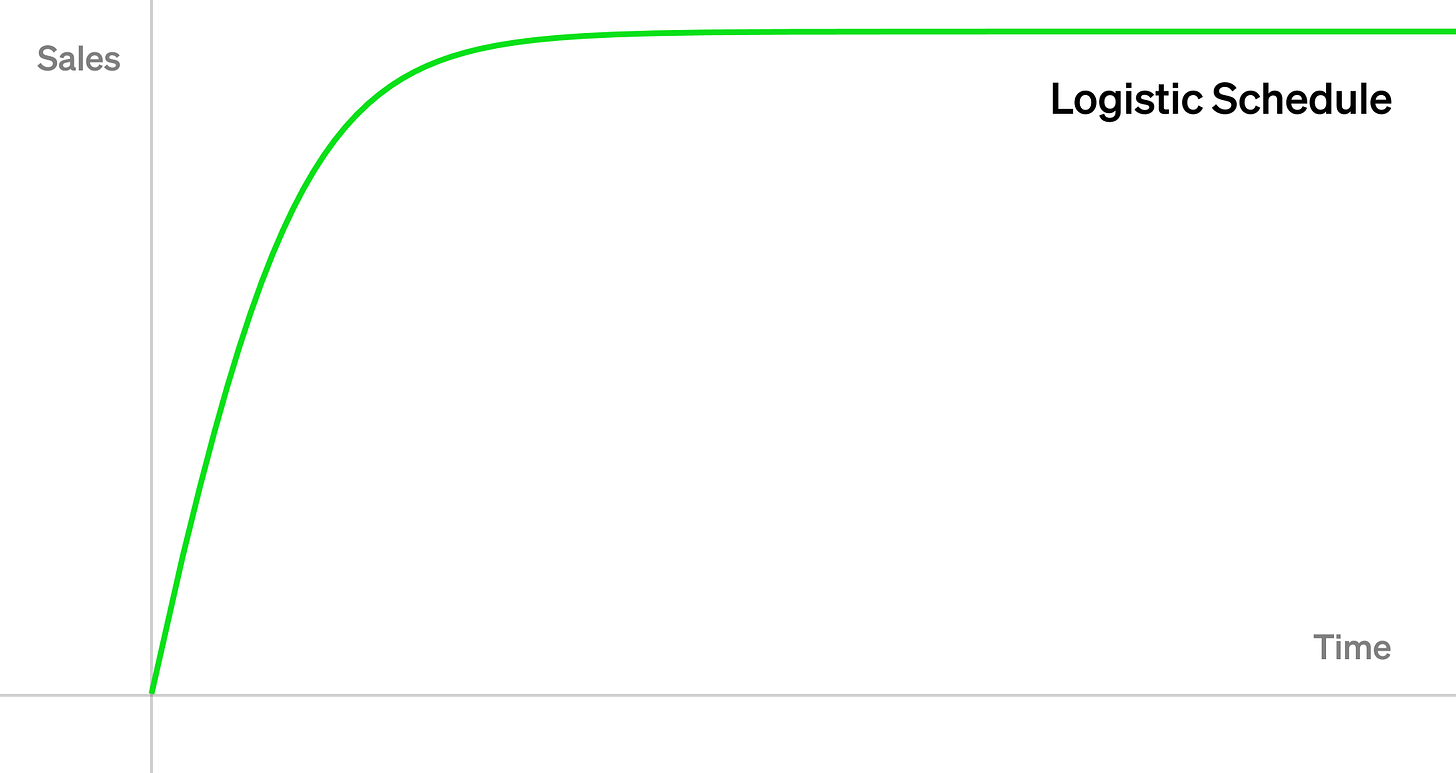
The project applied this theoretical model in the case of Art Gobblers to control the growth of the community and the pace of UGC.
For more information: https://www.paradigm.xyz/2022/08/vrgda
GOO: Gradual Ownership Optimization
To prevent fragmentation of ownership between Gobbler NFT holders and GOO token holders, the project has devised a mechanism to combine Gobbler NFTs with Goo tokens.
1.Goo Supply Curve
The more Goo a Gobbler owns, the faster it generates Goo. The total supply curve is as follows:
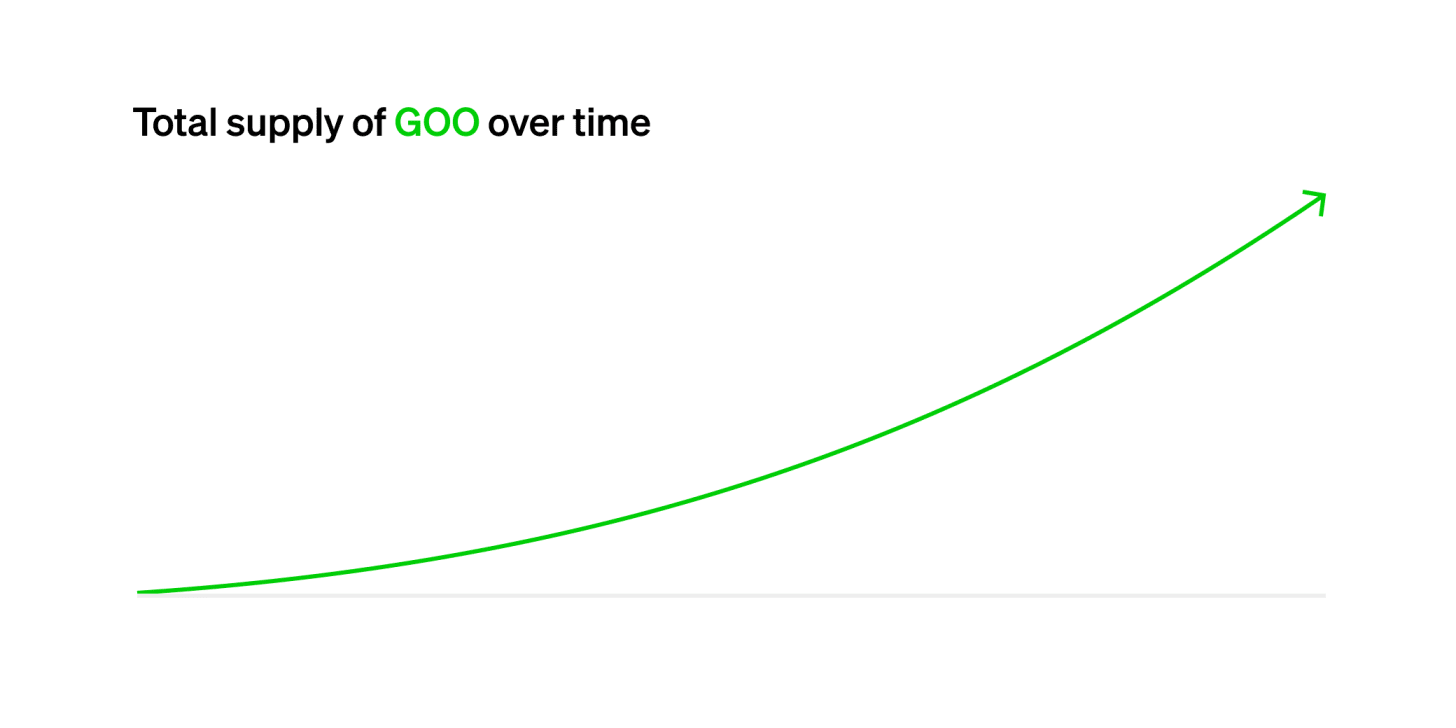
2.Balancing Strategies:
(1) If a user only owns Goo tokens and does not hold Gobbler NFT, other people holding Gobbler NFTs will keep producing Goo tokens and that user's share of the total Goo supply will rapidly decrease and thus making him lose money.
(2) If a user owns a Gobbler NFT, that user's Goo will always have a fixed percentage of the total Goo supply because the Gobbler NFT will keep producing Goo.
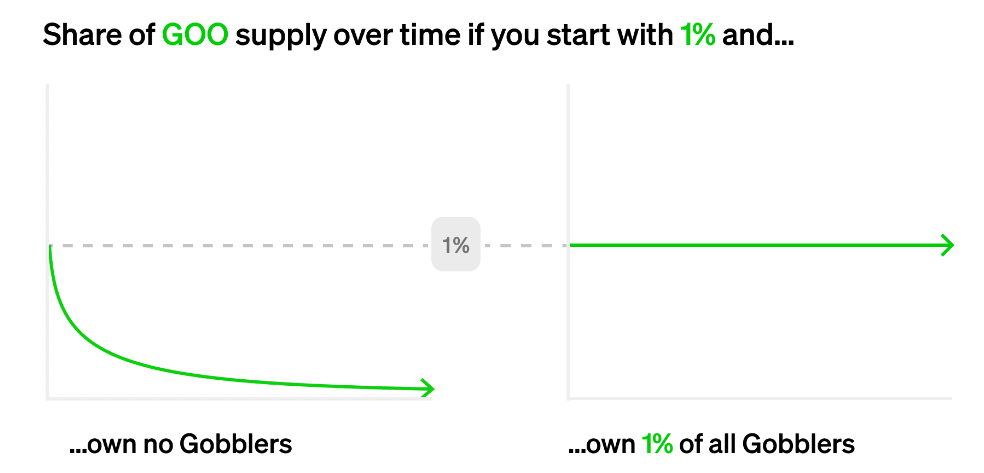
3.Goo Production Rate
(1) Restricting the production of Goo per Gobbler
The more Goo added to a single Gobbler NFT, the smaller the instantaneous production rate of the Gobbler NFT. This will prevent users from adding a large number of Goo to a single Gobbler. The formula is as follows:

(2)Encourage multiple Gobblers to optimize Goo production rates
Users can distribute their Goo among multiple Gobblers to maintain optimal productivity.

This mechanism, while designed for the Art Gobblers project, also applies to any NFT project that has issued ERC 20 tokens, and it aligns ERC 721 NFTs with ERC 20 holders while ensuring the priority of NFTs.
DYOR. Please consult with a financial advisor before making any investment decisions. Echoo Research does not provide any financial advice and the above contents are only for informational purposes.
Echoo Research is a reader-supported publication. To receive new posts and support my work, consider becoming a free or paid subscriber.
